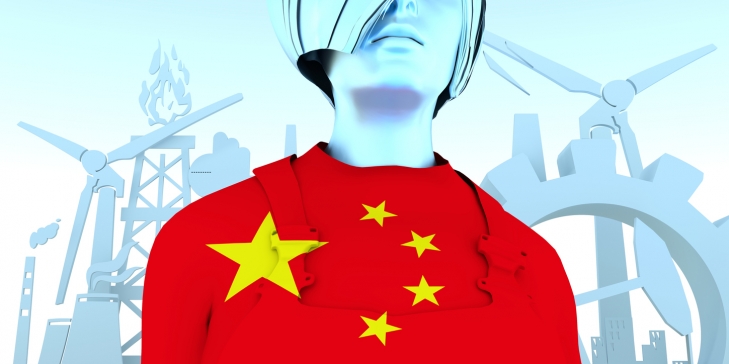29 Nov 2017


This article is republished with permission by China Business Knowledge at Chinese University of Hong Kong Business School. You can access the original article here.
China is distancing itself from other emerging economies, such as Brazil and India, in terms of innovation and high-technology, and gradually approaching more advanced industrialized economies known for their innovation abilities, according to Dr. Scott Kennedy, Deputy Director of the Freeman Chair in China Studies and Director of the Project on Chinese Business and Political Economy from the Center for Strategic and International Studies (CSIS), a Washington D.C. based nonprofit policy research organisation which focuses on defense and security; regional stability; and transnational challenges ranging from climate change to economic integration.
“Overall speaking, China’s high-tech drive may be characterised as ‘good-enough’ innovation. It still has a substantial distance to travel before it approaches the level of innovation found in the world’s most advanced economies,” said Dr. Kennedy, at a seminar organised by American Chamber of Commerce in Hong Kong in September 2017. He is leading a project on China’s innovation policy, which sheds light on the trends in technology innovation in China and its implications for policy makers.
He said that China’s innovation performance has gradually improved over the last decade along a number of indicators. However, its inputs in innovation are not translating consistently and smoothly into successful technology innovation outputs.
“China’s innovation inputs, such as funding, have improved more quickly than outputs, such as intellectual property (IP) and commercial performance.”
According to Dr. Kennedy, Chinese spending on research and development is increasing rapidly, from 0.9 percent ($ 10.9 billion) of GDP in 2000 to 2.1 percent ($232 billion) in 2016, placing China in the company of other advanced industrialised economies.
When it comes to patents, Dr. Kennedy pointed out that “China may now be a ‘large’ IP country, but it is still a ‘weak’ one.” He said that China’s patent applications have been growing rapidly in recent years, from a total of 170,000 patent applications in 2000, to almost 2.8 million applications in 2015. However, it’s worth noting that only a minority of patents in China are invention patents. More specifically, in 2015, only 39 percent of applications and 21 percent of approvals were invention patents, which means that the majority of patents were utility-model and design patents, which are granted with far less scrutiny.
Dr. Kennedy added that much of China’s efforts to develop and obtain more IP are driven heavily by the government, rather than the market. And without sufficient market support for patents and other types of IP, “deep technology innovation will be hard to sustain,” he said.
Another measure of China’s innovation performance, according to Dr. Kennedy, is to what extent the technology has been contributed to China’s economy, or in other words, its commercial performance, meaning “if these technologies translate into novel products that are successfully designed, built, and sold.”
According to China’s Science & Technology Progress Contribution Rate (STPCR) released by the Chinese government, which essentially measures the proportion of the economy supported by science and technology in one way or another, the figure has risen almost continuously since it was first calculated in 2005.
In addition, the share of high-tech sector income generated from domestic Chinese enterprises has climbed continuously since 2008, reaching 46.6 percent in 2014.
Dr. Kennedy dubbed it “fat years for China’s innovation development.” He said that to some extent, the commercial success of some Chinese technology companies was taking advantage of the China’s market and support of the government, not new inventions and technological breakthroughs.
In light of that, regardless of the level of support they receive from their government, Chinese companies will face growing challenges when interacting with multinational businesses and in overseas markets, he warned.
However, Prof. Ma Xufei, Associate Professor of the Department of Management and Director of Center for Entrepreneurship at the Chinese University of Hong Kong (CUHK) Business School refuted this idea. A reputed scholar on the development of China’s innovation and entrepreneurship, Prof. Ma believes that a patient and positive attitude is important to innovation success.
He suggested we should take a long-term view to evaluate China’s innovation performance. “When we talk about innovation investments and efforts, we should always be ‘patient’ for the outputs,” Prof. Ma commented. “Innovation takes time. For example, for the R&D of new drugs, there is a famous ‘10-10-10 formula’, which means that to pursue success in such R&D, it always takes about 10 years and costs about US$1billion, but the success rate is only 10%.
He said that according to some scholars, there are three phases of the innovation and technology development in China: ’from copying to fit for purpose’, ’from followers to world standard’, and ’from new resources to new knowledge’.
“Different locations, industries, or companies in China are now experiencing different phases of their innovation and technology development,” said Prof. Ma, who believes that some Chinese companies now are the world leaders in some fields.
He pointed out that ‘innovation’ is different from ‘inventions’, with the former not only referring to new technologies, but also including innovative business models, in which China has many successful cases. And even for new inventions, China’s performance is also notable.
He said that China has developed its ‘new four great inventions’: lockless shared bicycles, high-speed railway, Alipay, and e-commerce. “They all have achieved commercial success,” he said.
“People may attribute such success to China’s huge market and support from the government, but we cannot ignore the unique spirits or characteristics of Chinese entrepreneurs, who are hard-working, action-oriented, and quick-learning. If we do a variance decomposition analysis of these successes, the portion derived from entrepreneurs themselves could be significant enough and definitely should be highlighted,” Prof. Ma remarked.
Follow us on Twitter (@sgsmuperspectiv) or like us on Facebook (https://www.facebook.com/PerspectivesAtSMU)
Last updated on 30 Nov 2017 .

